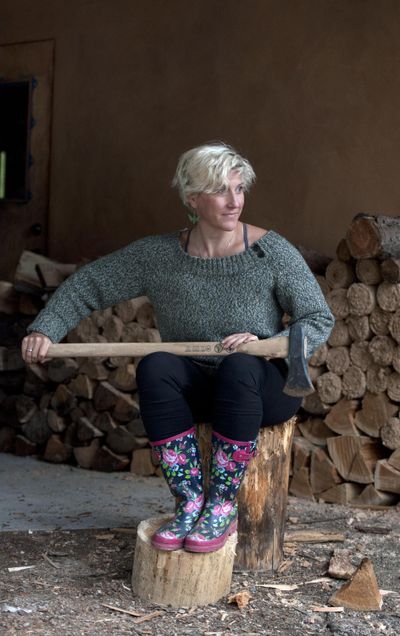Ammi Midstokke: The road less traveled leads to good neighbors

I recently moved into the countryside. Although this term suggests something of rolling hills and sprawling farms, in the Panhandle it means Backwoods Idaho. Also known as the birthplace of national adventures like Ruby Ridge and preppers. Like many pockets of the rural Northwest, it is full of good forest and good people.
It is also the home of roads that thaw in a phenomena of “spring breakup” that flatlanders struggle to comprehend. I know this because the first day there was a trickle and a pothole in the road, my Kentucky boyfriend came home to dramatically report the destruction of the entire route and declare breakup had arrived.
“Did you lose any children or vehicles into this so-called chasm of mud?” I asked. He blinked at me.
“Then it’s not breakup yet. Tether the children and just wait.”
A week later when the rain had worked its magic of bog creation, he half-buried his jeep on the way home. If you can still open the doors, the situation is not dire and one should merely drop a few trees on which to crawl out. Or one can wander over to the neighbor’s house to see if any of their vehicles have survived the appetite of the earth.
The neighbor came more as emotional support than anything else. Various rigs and ropes were assessed for effective problem resolution. They too were consumed by the vortex of muck. (NASA scientists may want to study this plasma substance as some localized form of a black hole or portal to a parallel universe.)
There was humming and hawing and a great deal of cussing and some chuffing, too. The men did man things. As far as I can tell, that basically means having complex conversations of profound communicative understanding without actually saying a word. Friendships were formed. Trucks were retrieved.
Days later, we found four enormous pig carcasses on our property. I would have understood if they had been used to fill the veritable swamp of my driveway. Instead, they had been tossed in the draw – a steep tree and weed overgrown embankment that leads to a fresh water source. Despite a ripe coyote population, I suspect that this is not the best place for decomposing livestock.
Now swine are a stubborn animal, both alive and dead. I know this because my mom has one of those pocket pigs people “domesticate” and train to be an indoor bully of humans and other house pets. She named her Violet because Charlotte was too cliché and Bacon was too blatant.
Pigs are supposed to be very smart and uniquely trainable, but my experience is that they fall on the spectrum of personality disorders somewhere between narcissist and sociopath. “Look at her setting boundaries,” my mom will sweetly note as the pig tries to chomp through the bones on my ankle like I’m in a bad mafia movie.
The pigs in my canyon were a great deal larger and a great deal more grotesque, of course, and they urgently needed relocating. Kentucky called on our other neighbor (driveway to left versus driveway to the right). A system of ropes and pulleys and tractors was implemented. There was cussing and chuffing and some nose holding.
Only a really good neighbor would subject themselves to the carnage witnessed that day. I should probably bake them some cookies. A bacon casserole may raise eyebrows. The men bonded, likely over the trauma-inducing nature of the experience. Again, friendships were formed.
In the city, our overbusy, overstimulated lives combined with a strange culture of independence and isolation kept our neighbor relationships superficial. There was a ladder lending here and a “good day” there. And for a couple of months once, we mostly had to communicate through the police we asked to swing by for a drunken brawl. (We would sit in bed with popcorn and peer through our blinds.)
At first, I was concerned the neighbors would be wary of us because I put up a hand-painted mailbox with rainbows. To avoid being labeled as liberal hippies and maintain a level of conservative respect, we occasionally shoot guns at things. Mostly the woodpecker that finds his breakfast at sunrise in the siding directly behind my bed.
As we settle into our new surroundings, we have forged entirely new relationships of community, kindness and even need. They are friendships created out of generous acts, good humans and a fair bit of commiserating. They have grit and substance and shared memories.
Yet when we plant our roots, buy homes, or make rental contracts we can’t leave, neighbors are often some of the longest lasting relationships we have. And heaven knows they bear witness to our lives more than many of our other friends. The happenstance interactions do not allow us to determine what we present (fetching the paper in a bathrobe at best). There is a raw, sweet humanity to this different kind of intimacy. A friendship of chance and time.
In Robert Frost’s “The Mending Wall” he wrote, “Good fences make good neighbors.” It wasn’t until recently I realized it was the mending that made the good neighbor, for the fence was not a barrier but a common ground.
Ammi Midstokke is filling in for columnist Doug Clark, who’s on vacation.